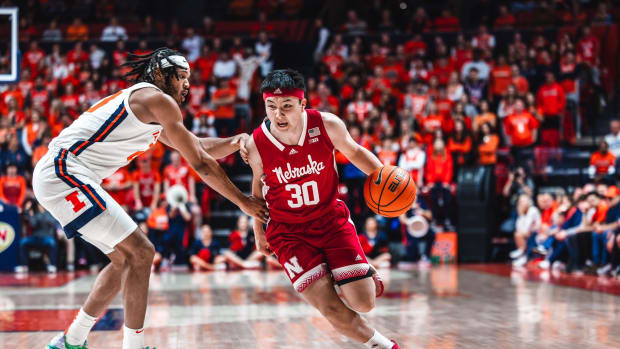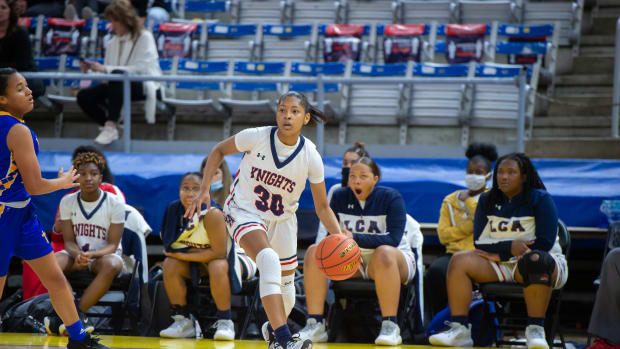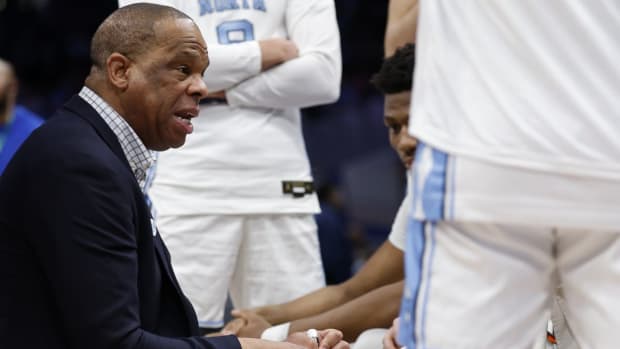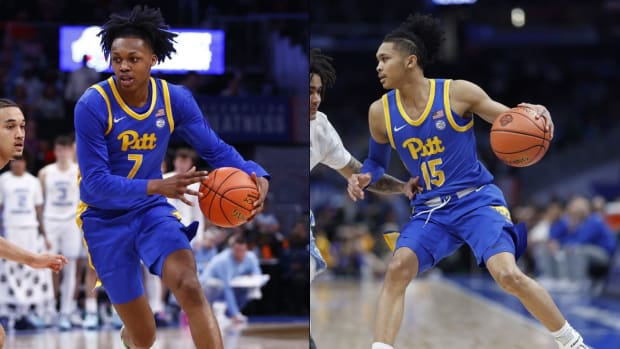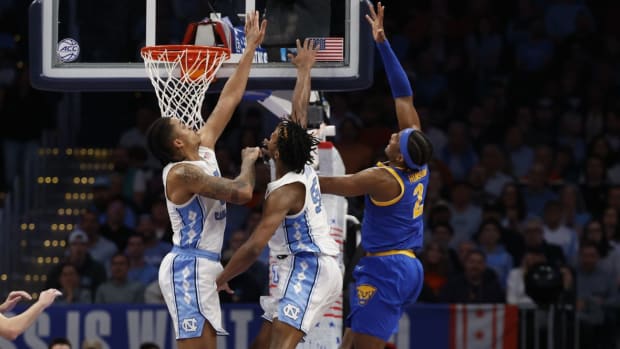March Madness Cinderella Rankings: Teams Most Likely to Pull Off Upsets in the NCAA Tournament
Picking upsets is the most fun part about filling out NCAA tournament brackets. You spend the hours after the field of 68 is unveiled on Selection Sunday researching which squads with high seeds might be vulnerable, and then try to overcome the comfort of playing it safe by rolling with a more proven team with ostensibly superior players. Below are the eight outfits seeded at No. 11 or lower that have the best opportunity to upset their opponents in the first round, ranked (totally unscientifically) in order of the likelihood that they’ll actually pull it off. One additional note: None of the teams squaring off in Dayton on Tuesday and Wednesday were considered because this piece is being published before the First Four tips off.
1. No. 11 Loyola Chicago over No. 6 Miami (South)
Miami finished the regular season in promising fashion, winning four consecutive games heading into the ACC tournament. That stretch didn’t result in the Hurricanes getting a favorable first-round draw in the NCAAs. Loyola Chicago is one of the top defensive teams outside of the high-major conferences, checking in at No. 24 in Ken Pomeroy’s adjusted defensive efficiency. The Ramblers are capable of stifling a Hurricanes squad that has neither shot the ball particularly well from the field or excelled at generating easy points at the free-throw line this season. Sunday’s news that projected NBA draft pick Bruce Brown—who underwent surgery to address a foot injury in February—isn’t suiting up for this contest won’t help.
2. No. 12 New Mexico State over No. 5 Clemson (Midwest)
Give Clemson credit for shaking off a season-ending injury sustained by senior Donte Grantham that jeopardized the Tigers’ at-large viability. They made the NCAAs with plenty of room to spare, but that doesn’t mean they won’t have a really tough time in their opener. New Mexico State can really guard: Western Athletic Conference opponents managed only 0.89 points per possession and converted 42.6% of their two-point attempts against the Aggies. Clemson represents a huge step up in competition for head coach Chris Jans’s group, but that shouldn’t faze a New Mexico State team that’s already shown this season that it’s not cowed by high-major opposition. The Aggies beat Miami on a neutral court on Dec. 23, two days before falling to at-large snub USC by just five points.
NCAA Tournament 2018 Bracket: Region-by-Region Breakdown
3. No. 11 San Diego State over No. 6 Houston (West)
The Aztecs wouldn’t have had a shot at getting into the field of 68 had they not won the Mountain West Conference tournament by getting past Fresno State, regular-season champ Nevada and New Mexico. Yet San Diego State’s unremarkable regular-season body of work shouldn’t be grounds for underestimating the first Aztecs team of the post-Steve Fisher era. San Diego State endured a rocky stretch during conference play in which it lost six of eight games, but it’s unbeaten in nine games since being blown out by the Wolf Pack on Feb. 10. If it can keep redshirt senior guard Rob Gray, Houston’s prolific bucket-getter, in check, the Aztecs should be able to get enough offense from senior forward Malik Pope and redshirt freshman forward Jalen McDaniels to send the Cougars packing.
4. No. 12 South Dakota State over No. 5 Ohio State (West)
Few first-round games offer a more intriguing one-on-one battle than this one. Redshirt junior forward and projected draft pick Keita Bates-Diop is the engine powering Ohio State’s remarkable turnaround under first-year head coach Chris Holtmann, while South Dakota State’s Mike Daum is the small-school standout with a splendid nickname and a penchant for producing profusions of points—like when he dropped 51 in a win over Fort Wayne in February of 2017. Those points aren’t going to come as easily against the Buckeyes’ defense—which ranks 16th in the country in Pomeroy’s adjusted efficiency—as they have against Summit League opponents, but Daum is definitely going to make that defense work. Whether he’ll score enough to push the Jackrabbits to the second round is another matter.
5. No. 12 Davidson over No. 5 Kentucky (South)
Both of these teams will be only a few days removed from winning their conference tournaments when they face off, but only one of them would have earned an invitation to the NCAAs had it fallen short. That would be Kentucky, which managed to quash minor doubts about its at-large candidacy prompted by a turbulent February stretch with a spurt that saw it win seven of eight. None of those wins came against a team with an offense as efficient as the Davidson’s. Davidson features five players who’ve canned 37% or more of at least 85 three-point attempts (projected nation-leading scorer Peyton Aldridge among them); it has turned the ball over on a smaller portion of its trips down the court than all but six teams in the country and it ranks 11th in the country in effective field-goal percentage, which adjusts for the added value of long-range shots.
6. No. 12 Murray State over No. 5 West Virginia (East)
Get to know the name Jonathan Stark. In his second season since transferring from Tulane, Stark lit aflame Ohio Valley Conference defenses by raining fire from three-point range (43% on 165 attempts), earning trips to the free-throw line (6.6 FTAs per 40 minutes) and converting his freebies at a terrific clip (91.1% on 112 attempts). Just as the Mountaineers’ full court-pressing, turnover-creating defense—which ranks second in Division I by forcing giveaways on 23.4% of opponents’ possessions—will be a formidable challenge for Stark, making sure Stark doesn’t go off for 30-plus points will be a formidable challenge for senior guard Jevon Carter and the rest of West Virginia’s perimeter corps.
7. No. 13 Buffalo over No. 4 Arizona (South)
The Bulls will not be intimated by this stage. This is Buffalo’s third trip to the tourney in four years and their second under third-year head coach Nate Oats. It also could bring the first tourney win in program history. Buffalo does not have any player who’s capable of handling Deandre Ayton—Arizona’s 7'1", 250-pound freshman big man/two-way monster/soon-to-be lottery pick—in a one-on-one matchup, but basically every other team in the country is in the same boat. What the Bulls do have is two members of the all-Mid-American Conference first team (junior guard C.J. Massinburg, junior forward Nick Perkins) averaging at least 16 points per game, plus an all-MAC second-teamer in 6’7" junior wing (Jeremy Harris) who led all MAC players during conference play by draining 46.3% of his 108 three-point attempts.
8. No. 15 Georgia State over No. 2 Cincinnati (South)
An opening-round exit at the hands of a No. 15 seed would be uncharacteristic of this Cincinnati team. All four of the Bearcats’ losses this season have come against squads that earned a top-six seed and are ranked in the top 25 of Ken Pomeroy’s rankings (Florida, Houston, Wichita State, Xavier). There’s a chance Cincinnati will smother the Panthers in a dull, low-scoring slog that isn’t competitive past the midway point of the second half, but there’s also a chance that the Bearcats won’t be able to keep in check Georgia State’s D’Marcus Simonds—a 6’3’’ sophomore guard who averaged 21.8 points per game in Sun Belt play, was named the conference’s player of the year and has generated some buzz as an NBA prospect.

